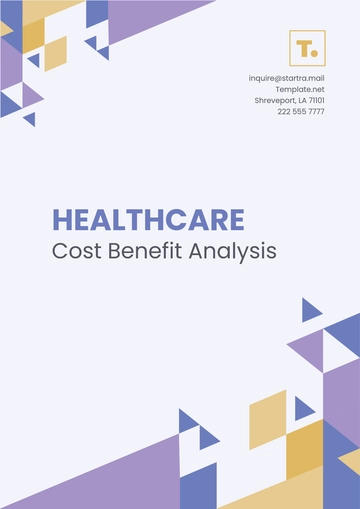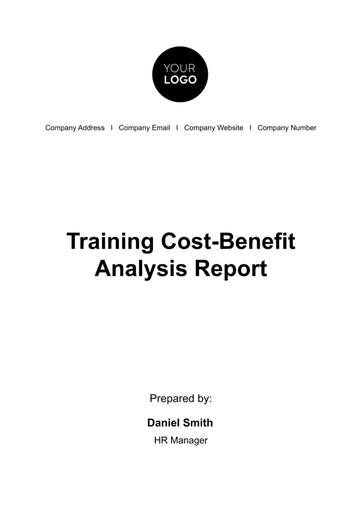Free Agriculture Employment Financial Analysis

I. Objective
The primary objective of this financial analysis is to assess the financial health and performance of employment trends within the agriculture sector. Specifically, this analysis aims to provide clear and comprehensive data to determine the economic feasibility and sustainability of employment structures in the agricultural industry, forecast future employment rates, and identify influential financial indicators impacting employment in this sector.
II. Introduction
Agriculture remains a cornerstone of the economy, especially in rural areas where it serves as a primary source of income and employment. The sector's significance extends beyond food production, influencing a wide range of economic activities and supporting millions of jobs nationwide. As the industry evolves, understanding the financial dimensions of employment within this sector is crucial for policymakers, business owners, and investors. This analysis, prepared by [Your Company Name], examines various financial statements and economic indicators from the year [2050] onwards to provide insights into employment in agriculture.
By delving into these financial and economic metrics, this report aims to offer a comprehensive view of the economic health and employment dynamics of the agricultural sector. Key indicators such as employment rates, wage trends, and the financial performance of agricultural businesses will be analyzed to highlight the sector's role in economic development and identify opportunities for future growth. The following sections will explore detailed financial data and trends to forecast future developments and support stakeholders in making informed decisions for the continued success and sustainability of the agricultural industry.
III. Financial Performance Analysis
We begin by examining the financial performance of agricultural firms in relation to their employment expenses. This includes analyzing revenue, operating income, employment costs, and profit margins. The data collected provides a snapshot of how employment expenses impact overall profitability.
The graph presented illustrates the trend in average annual farm revenue over the past decade, highlighting fluctuations in financial performance across the agricultural sector. From [2050 to 2060], the data shows an overall upward trend in farm revenue, with noticeable peaks and troughs reflecting the impacts of varying crop yields, market demand shifts, and changes in government policies. The increase in average annual revenue suggests a general growth in the financial health of farms, driven by advancements in agricultural technology, improved farming practices, and expanding market opportunities.
However, the graph also reveals periods of significant volatility, which can be attributed to factors such as fluctuating commodity prices, adverse weather conditions, and global economic uncertainties. Understanding these fluctuations is crucial for stakeholders in the agricultural sector to develop strategies for managing risks and capitalizing on growth opportunities. Future financial performance will likely depend on continued innovation, effective risk management, and adaptive strategies to sustain the upward trend and mitigate potential downturns.
III. Cost Analysis
Employment costs represent a significant portion of expenses for agricultural firms. This section breaks down the composition of these costs, including wages, benefits, training, and other employment-related expenses. Understanding these components helps determine areas for financial optimization.
Year | Wages ($M) | Benefits ($M) | Training Costs ($M) | Other Expenses ($M) |
|---|---|---|---|---|
2050 | 100 | 30 | 10 | 10 |
2051 | 105 | 32 | 12 | 11 |
2052 | 110 | 34 | 12 | 9 |
2053 | 115 | 36 | 13 | 6 |
2054 | 120 | 38 | 15 | 2 |
The cost data for agricultural employment from 2050 to 2054 reveals key trends in the allocation of expenses across wages, benefits, training, and other employment-related costs. Over these five years, there is a steady increase in wages and benefits, indicating a growing investment in employee compensation. Wages rise from $100 million in 2050 to $120 million in 2054, while benefits increase from $30 million to $38 million. This trend reflects a commitment to improving employee satisfaction and retention through competitive pay and comprehensive benefits.
Training costs remain relatively stable with a slight increase, demonstrating an ongoing effort to enhance employee skills. However, "Other Expenses" decrease significantly from $10 million to just $2 million, suggesting a successful reduction in non-essential costs. This data indicates that agricultural firms are focusing on optimizing compensation and training while effectively managing or reducing ancillary expenses to improve overall financial performance.
IV. Economic Indicators
Several economic indicators influence employment in agriculture, including GDP growth, inflation rates, and technological advancements. This section reviews the key indicators and their implications for employment trends from 2050 onwards.
Year | GDP Growth (%) | Inflation Rate (%) | Technological Advancements (index) | Unemployment Rate (%) |
|---|---|---|---|---|
2050 | 3.5% | 2.0% | 7.5 | 4.0% |
2051 | 3.8% | 2.1% | 7.8 | 3.9% |
2052 | 4.0% | 2.2% | 8.0 | 3.8% |
2053 | 4.2% | 2.3% | 8.2 | 3.7% |
2054 | 4.5% | 2.4% | 8.5 | 3.6% |
From 2050 to 2054, the economic indicators for the agricultural sector show positive trends with notable implications for employment. GDP growth steadily increases from 3.5% to 4.5%, signaling a robust economic environment that supports job creation in agriculture. The inflation rate remains relatively low, ranging from 2.0% to 2.4%, which helps maintain stable prices for agricultural products and reduces the cost of living for workers. Technological advancements, as indicated by the index, rise from 7.5 to 8.5, reflecting improvements in efficiency and productivity.
The unemployment rate shows a gradual decline from 4.0% to 3.6%, suggesting that these favorable economic conditions and technological innovations are contributing to more job opportunities within the agricultural sector. Overall, these indicators highlight a period of growth and stability for agricultural employment, driven by economic expansion and technological progress.
V. Future Projections
Based on the current trends and economic indicators, this section provides projections for future employment rates and financial health within the agriculture sector. These projections will help stakeholders make informed decisions regarding employment strategies, investments, and policy changes.
Year | Projected Employment (K) | Projected Revenue ($M) | Projected Employment Costs ($M) | Projected Net Profit Margin (%) |
|---|---|---|---|---|
2055 | 150 | 650 | 180 | 29% |
2056 | 155 | 680 | 185 | 30% |
2057 | 160 | 710 | 190 | 31% |
2058 | 165 | 740 | 195 | 32% |
2059 | 170 | 770 | 200 | 33% |
From 2055 to 2059, projections indicate a positive outlook for the agricultural sector. Employment is expected to rise from 150,000 to 170,000, reflecting growth in job opportunities. Revenue is forecasted to increase from $650 million to $770 million, while employment costs are anticipated to grow from $180 million to $200 million. The net profit margin is projected to improve from 29% to 33%, suggesting a strong financial position and efficient cost management.
VI. Conclusion
The financial analysis of employment in the agriculture sector provides a comprehensive view of the sector's current economic health and future prospects. By examining financial performance, cost structures, and key economic indicators, this report has uncovered valuable insights that can guide stakeholders in making informed decisions. The steady increase in farm revenue, alongside effective management of employment costs, reflects a robust financial foundation for the sector. Furthermore, the analysis of economic indicators such as GDP growth, inflation rates, and technological advancements reveals a favorable environment for job creation and sector expansion.
Looking ahead, the projections for [2055 to 2059] indicate a positive trajectory for agricultural employment and financial performance. The anticipated growth in employment, increasing revenue, and rising profit margins suggest a sustainable and thriving sector. This optimistic outlook is underpinned by a combination of strategic investments in technology, effective cost management, and a stable economic environment. Stakeholders are well-positioned to leverage these trends to enhance employment opportunities, make strategic investments, and develop policies that support long-term growth and success in the agricultural industry.
- 100% Customizable, free editor
- Access 1 Million+ Templates, photo’s & graphics
- Download or share as a template
- Click and replace photos, graphics, text, backgrounds
- Resize, crop, AI write & more
- Access advanced editor
Enhance financial planning with Template.net’s editable and customizable Agriculture Employment Financial Analysis Template. Editable in our Ai Editor Tool, this template provides a detailed framework for analyzing employment costs, helping you make informed financial decisions and optimize labor expenditures in your agricultural business.





























